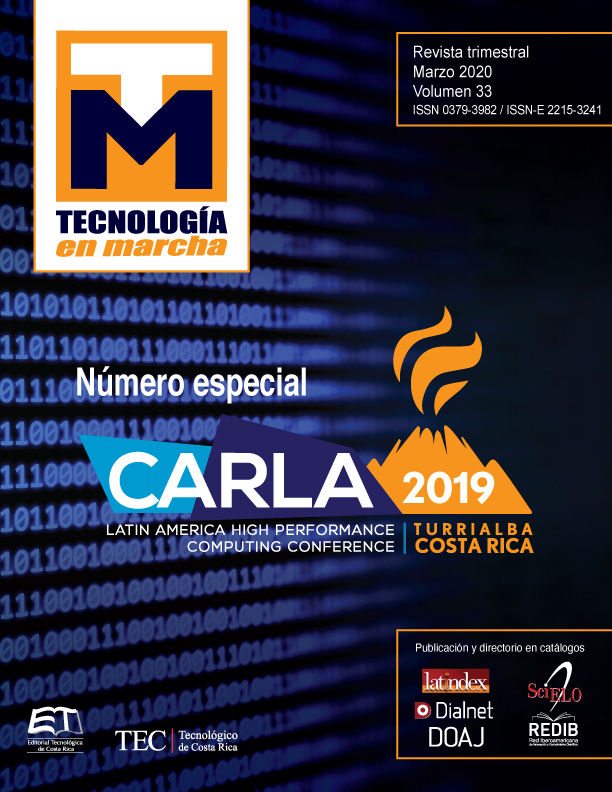Análisis Filogenético de Secuencias ITS Provenientes de Hongos Endófitos Utilizando Inferencia Bayesiana Paralela de Árboles con Exabayes
Contenido principal del artículo
Resumen
Los estudios ecológicos de las comunidades fúngicas se han visto favorecidos gracias a la aparición y mejora de técnicas independientes de cultivo que utilizan la región ITS como marcador molecular. Esto ha permitido una identificación más precisa en comparación con los métodos tradicionales dependientes de la cultura.
Las técnicas de secuenciación de próxima generación han aumentado la cantidad de datos disponibles para la comprensión de las comunidades de hongos endofíticos. Una parte importante de este proceso es la inferencia filogenética para descifrar cómo se relacionan e interactúan los diferentes taxones, sin embargo, este puede convertirse en uno de los análisis bioinformáticos que exige más tiempo.
En respuesta a esto, la bioinformática junto con la informática de alto rendimiento ofrecen soluciones para acelerar y hacer más eficientes las herramientas disponibles para el procesamiento de datos a través de la implementación de supercomputadoras y la paralelización de herramientas.
En este estudio llevamos a cabo el procesamiento de secuencias ITS para luego utilizar la paralelización de Exabayes, software especializado en el análisis y creación de árboles filogenéticos.
Gracias al uso de esta técnica, fue posible reducir el tiempo de ejecución de Exabayes de más de 400 horas a 6 horas, lo que demuestra los beneficios del uso de plataformas informáticas de alto rendimiento.
Detalles del artículo
Los autores conservan los derechos de autor y ceden a la revista el derecho de la primera publicación y pueda editarlo, reproducirlo, distribuirlo, exhibirlo y comunicarlo en el país y en el extranjero mediante medios impresos y electrónicos. Asimismo, asumen el compromiso sobre cualquier litigio o reclamación relacionada con derechos de propiedad intelectual, exonerando de responsabilidad a la Editorial Tecnológica de Costa Rica. Además, se establece que los autores pueden realizar otros acuerdos contractuales independientes y adicionales para la distribución no exclusiva de la versión del artículo publicado en esta revista (p. ej., incluirlo en un repositorio institucional o publicarlo en un libro) siempre que indiquen claramente que el trabajo se publicó por primera vez en esta revista.

